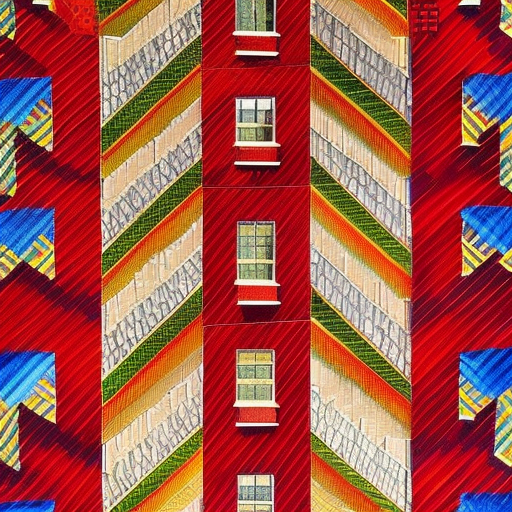Summary:
Op Art, short for Optical Art, is an art movement that emerged in the 1960s and focuses on creating optical illusions through the use of geometric patterns and color. It aims to engage the viewer’s perception and create a sense of movement or vibration in the artwork. Op Art artists employ various techniques such as the use of contrasting colors, repetition, and precise geometric shapes to achieve these effects. The movement had a significant impact on the art world and continues to influence contemporary artists today.
Origins and Influences:
Op Art emerged in the 1960s as a response to the abstract expressionism dominant at the time. Artists sought to move away from the emotional and subjective nature of abstract expressionism and instead focus on the objective qualities of art. The movement drew inspiration from various sources, including the study of visual perception, scientific theories, and the exploration of new materials and techniques.
Characteristics and Techniques:
Op Art is characterized by its emphasis on visual perception and the creation of optical illusions. Artists employ various techniques to achieve these effects. One common technique is the use of contrasting colors, such as black and white or complementary colors, to create a sense of movement or vibration. Another technique is the use of precise geometric shapes, such as squares, circles, or lines, arranged in repetitive patterns. These patterns often create a sense of depth or three-dimensionality in the artwork.
Key Artists:
Several artists played a significant role in the development and popularization of Op Art. Victor Vasarely, often considered the father of Op Art, created intricate geometric patterns that appeared to move and vibrate. Bridget Riley, known for her black and white paintings, explored the effects of optical illusions through the use of repetitive patterns. Other notable artists include Richard Anuszkiewicz, Jesús Rafael Soto, and Yaacov Agam.
Impact and Legacy:
Op Art had a profound impact on the art world and continues to influence artists today. The movement challenged traditional notions of art by focusing on the viewer’s perception and the objective qualities of the artwork. Op Art also had a significant influence on other art forms, such as fashion, design, and architecture. Its emphasis on optical illusions and visual perception can be seen in contemporary art movements such as kinetic art and digital art.
Conclusion:
Op Art, an art movement that emerged in the 1960s, focuses on creating optical illusions through the use of geometric patterns and color. It aims to engage the viewer’s perception and create a sense of movement or vibration in the artwork. Op Art artists employ various techniques such as the use of contrasting colors, repetition, and precise geometric shapes to achieve these effects. The movement had a significant impact on the art world and continues to influence contemporary artists today. Op Art challenged traditional notions of art by focusing on the viewer’s perception and the objective qualities of the artwork, and its influence can be seen in various art forms today.












